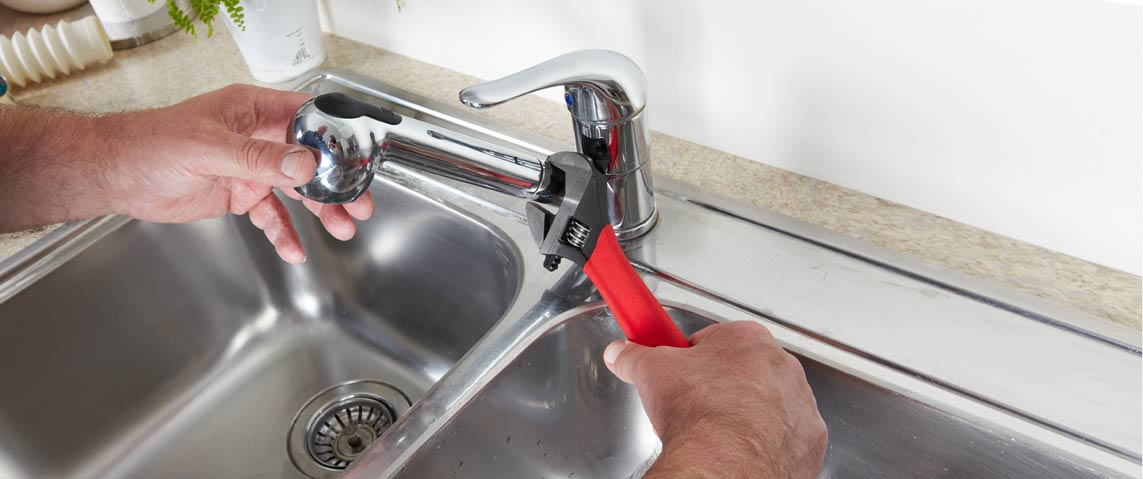How to change a kitchen tap?

Tools required:
Adjustable wrench
Basin wrench
Screwdriver
Plumbers tape
New tap
Step 1: Turn off the water supply
The first step in changing a kitchen tap is to turn off the water supply. The isolation valve is usually located underneath the sink, near the tap. Turn the valve clockwise to stop the water.
Step 2: Remove the old tap
Once the water supply is turned off, you can start removing the old tap. First, you need to disconnect the water supply hoses from the old tap. Use an adjustable wrench to loosen the nuts that secure the hoses to the tap. Once the nuts are loose, you can remove the hoses from the tap.
Next, remove any mounting hardware that secures the old tap to the sink. Use a basin wrench to loosen the nuts that secure the tap to the sink. When the nuts are loose, you can remove the old tap.
Step 3: Install the new tap
With the old tap removed, you can now install the new tap. Start by placing a rubber gasket on the bottom of the tap. Insert the tap into the sink hole and secure it with mounting hardware. Use a basin wrench to tighten the nuts that secure the tap to the sink.
Next, connect the water supply hoses to the new tap. Apply a few wraps of plumbers tape around the threads of the hoses to ensure a watertight seal. Use an adjustable wrench to tighten the nuts that secure the hoses to the tap.
Step 4: Turn on the water supply
With the new tap installed and connected to the water supply, it's time to turn on the water supply. Turn the isolation valve counterclockwise to restore the water supply to the tap.
Step 5: Test the new tap
Once the water supply is turned back on, test the new tap to ensure it's working correctly. Turn on the tap and check for any leaks or dribbles. If everything looks good, you're done!
Choose the right tap: When selecting a new tap for your kitchen, make sure to choose one that fits your sink's holes and the existing plumbing. There are various types of kitchen taps available, such as pillar taps, mixer taps, pull-out taps, and more. Consider your needs and preferences and choose a tap that suits your kitchen design and functions.
Prepare the work area: Before starting to change your kitchen tap, make sure to clear the work area and keep all the tools and materials ready. Also, place a towel or cloth underneath the sink to catch any water that may spill during the process.
Disconnect the dishwasher: If you have a dishwasher connected to the old tap, make sure to disconnect it before removing the old tap. Otherwise, you may damage the dishwasher or cause a water leak.
Remove any debris: Once you remove the old tap, clean the sink surface and remove any debris or old sealant that may prevent the new tap from fitting properly.
Use a basin wrench: A basin wrench is a useful tool that can help you tighten or loosen the nuts under the sink. It has a long handle and a pivoting jaw that can reach tight spaces and angles. Using a basin wrench can save you time and effort and prevent any damage to the sink or tap.
Check for leaks: After installing the new tap, turn on the water supply and check for any leaks or drips. Also, check the water pressure and temperature and make sure they are consistent with your preferences.
Hire a professional: If you're not confident in your DIY skills or don't have the right tools, you can hire a professional plumber to change your kitchen tap. A qualified plumber can ensure a safe and efficient installation and offer valuable advice on maintaining your tap and plumbing.
By following these tips and steps, you can change your kitchen tap with confidence and convenience. Remember to take your time, be patient, and always prioritise safety and functionality over aesthetics. A well-functioning and well-designed kitchen tap can enhance your cooking and cleaning experience and add value to your home.

 Home Emergency
Home Emergency 
 Home Appliances
Home Appliances 
 Landlord Home Emergency
Landlord Home Emergency 





 Motor Breakdown Cover
Motor Breakdown Cover 


 Infotainment
Infotainment 

 Home Emergency Insurance
Home Emergency Insurance Home Appliance Insurance
Home Appliance Insurance Landlord Home Emergency
Landlord Home Emergency TV Brands
TV Brands Gadgets Brands
Gadgets Brands